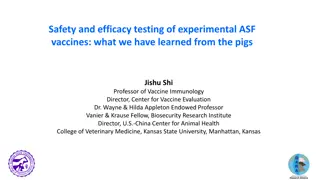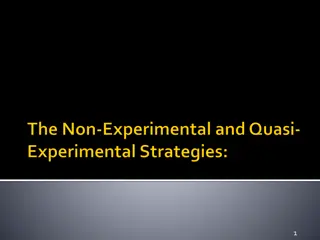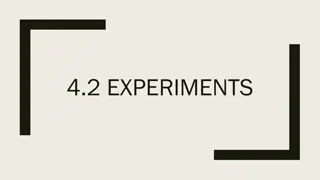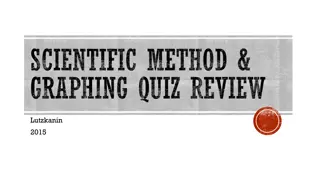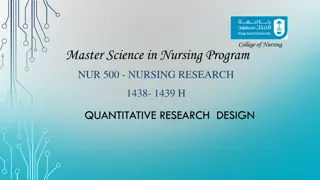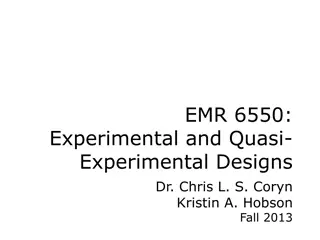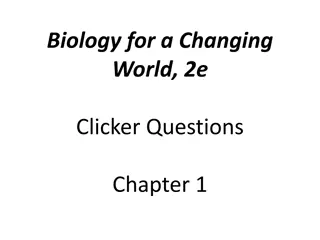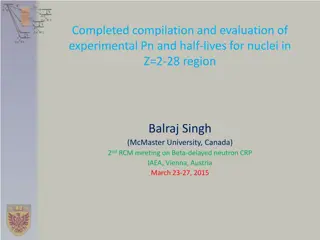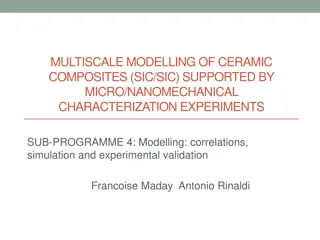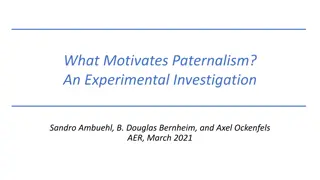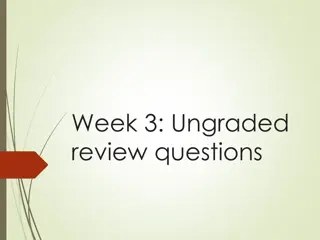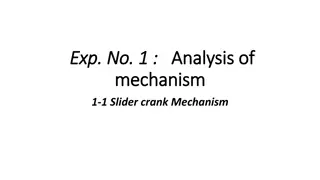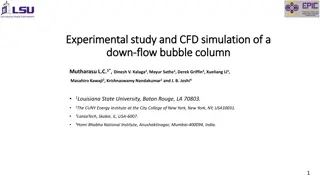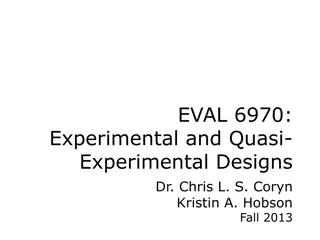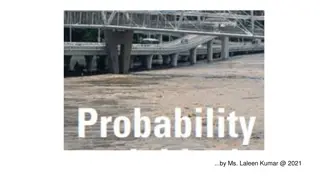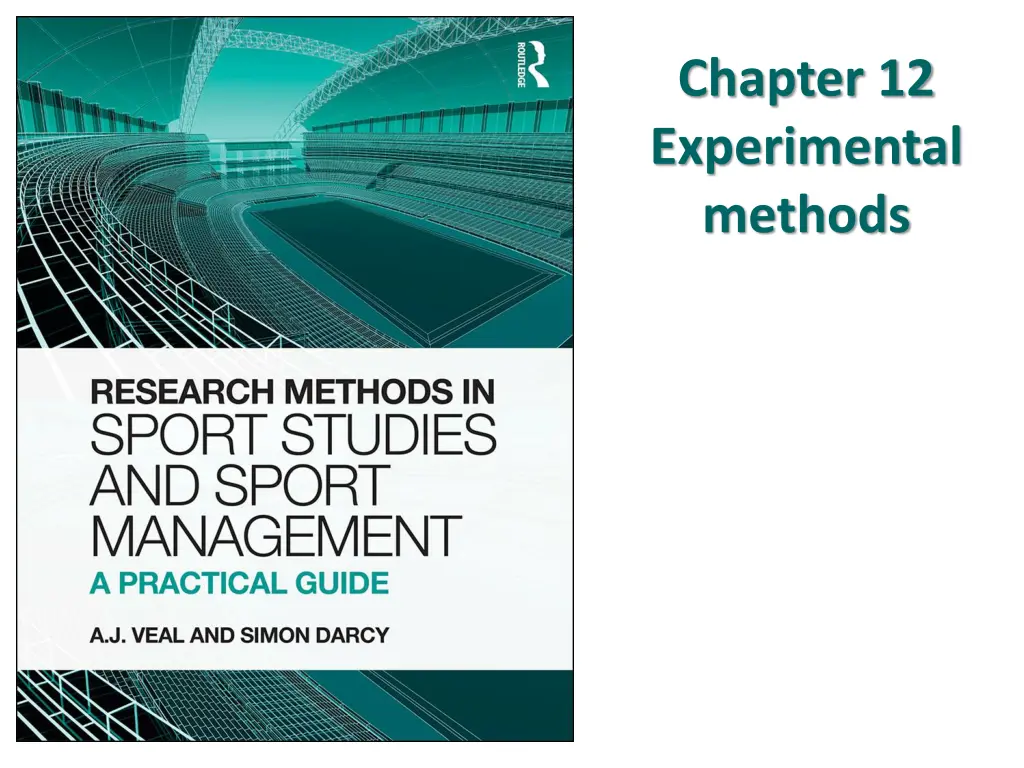
Experimental Methods in Leisure and Tourism Research
Explore the use of experimental methods in leisure and tourism research, covering principles, classic experiments, validity factors, threats to validity, and quasi-experimental designs. Gain insights into how to conduct effective experimental research in the field. An informative guide for researchers and students alike.
Download Presentation

Please find below an Image/Link to download the presentation.
The content on the website is provided AS IS for your information and personal use only. It may not be sold, licensed, or shared on other websites without obtaining consent from the author. If you encounter any issues during the download, it is possible that the publisher has removed the file from their server.
You are allowed to download the files provided on this website for personal or commercial use, subject to the condition that they are used lawfully. All files are the property of their respective owners.
The content on the website is provided AS IS for your information and personal use only. It may not be sold, licensed, or shared on other websites without obtaining consent from the author.
E N D
Presentation Transcript
Chapter 12 Experimental methods
Contents Introduction Principles of experimental research Validity Quasi-experimental designs Experimental methods in leisure and tourism research
Introduction Use of experimental methods in leisure and tourism research thought to be rare In fact, it is surprisingly common see examples in the last section A. J. Veal & S. Darcy (2014) Research Methods for Sport Studies and Sport Management: A practical guide. London: Routledge
Principles Components: Dependent variable Independent or treatment variable Treatment of experimental group of subjects Control group of subjects A. J. Veal & S. Darcy (2014) Research Methods for Sport Studies and Sport Management: A practical guide. London: Routledge
Classic experiment (Fig. 11.1) RS Random selection of subjects from the population Treatment group: Rt Control group: Rc 1. Subjects randomly allocated to groups 2. Pre-test observation for both groups Oc1 Ot1 3. Experimental treatment applied to treatment group only X 4. Post-test observation: both groups measured again Oc2 Ot2 Oc1 Ot1 Ot2 Ot1 etc 5. Comparisons made A. J. Veal & S. Darcy (2014) Research Methods for Sport Studies and Sport Management: A practical guide. London: Routledge
Validity Factors which raise doubts as to whether change in the dependent variable can be attributed entirely to the independent variable/treatment A. J. Veal & S. Darcy (2014) Research Methods for Sport Studies and Sport Management: A practical guide. London: Routledge
Threats to Validity (Fig. 11.2) Internal validity Maturation History Testing Instrumentation Selection bias Mortality Experimental design-related Change to subject during the study period eg. fatigue. External change during study eg. weather conditions. The test/observation process itself may affect subjects Inconsistency / unreliability in measuring/observation. Treatment /control groups significantly different Attrition of subjects from a study. External validity Reactive effects of testing Effects of selection Subjects may not be representative of wider population Generalised beyond the study subjects and setting. Tests/observation may sensitise/affect subjects A. J. Veal & S. Darcy (2014) Research Methods for Sport Studies and Sport Management: A practical guide. London: Routledge
Quasi-experimental design Examples: One-shot: No control group, No pre-test One group pre-test/post-test: No control group Static group comparison: No pre-test Latin square: two or more treatments in different sequences A. J. Veal & S. Darcy (2014) Research Methods for Sport Studies and Sport Management: A practical guide. London: Routledge
Experiments and sport projects One research project is likely to comprise many experiments Projects are therefore likely to be exploratory/ inductive A. J. Veal & S. Darcy (2014) Research Methods for Sport Studies and Sport Management: A practical guide. London: Routledge
Experimental methods in sport research (Fig. 11.14) Mostly quasi-experiments Training/coaching Sport policy/management pilot/trial projects Psychological/perceptual Equipment Experimenting with research methods Children's physical activity/play Other: A. J. Veal & S. Darcy (2014) Research Methods for Sport Studies and Sport Management: A practical guide. London: Routledge
Experiments in leisure/tourism research contd Other approaches: Action research researcher involved with subjects in joint action Discrete Choice Experiments hypothetical choices Q methodology choices involve ordering cards Qualitative methods: non-standardised interviewing is a form of treatment Mind mapping: using MRI scanners A. J. Veal & S. Darcy (2014) Research Methods for Sport Studies and Sport Management: A practical guide. London: Routledge
Experimental methods: Case studies 11.1 Training patterns and performance 11.2 Visual and auditory cues and behaviour 11.3 Pre-competition stress 11.4 Sport participation promotion projects: review 11.5 Sport and crime reduction 11.6 Psychological/perceptual studies 11.7 Players and sporting equipment 11.8 Experiments with research methods 11.9 Children s physical play experiments 11.10 Discrete choice experiment: sport facility preferences of soccer attendees A. J. Veal & S. Darcy (2014) Research Methods for Sport Studies and Sport Management: A practical guide. London: Routledge


